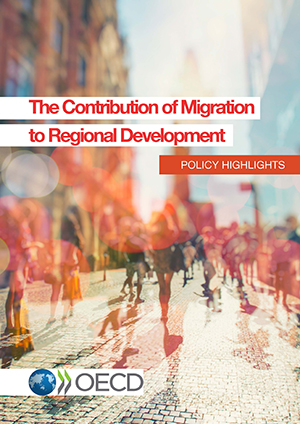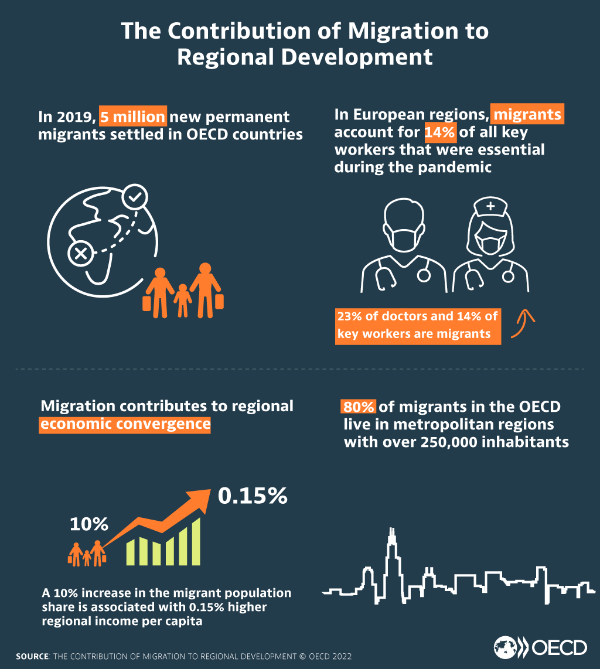Regional, rural and urban development

The Contribution of Migration to Regional Development
With many regions in OECD countries facing declining working age populations, the
geographical dimension of migration has become crucial for regional development. Where
migrants settle within countries and how much they contribute to the local economies
are important questions for policy makers. This report aims to address these questions
using two novel datasets that offer internationally comparable information on migration
and migrants' labour market integration across cities, towns and rural areas in OECD
countries. The report also analyses different dimensions of regional development and
provides new evidence on how migrants contribute to regional income, innovation, international
trade and labour markets.
Published on March 10, 2022
In series:OECD Regional Development Studiesview more titles
TABLE OF CONTENTS
| Foreword | |
| Executive summary | |
| The geography of migration across OECD regions and cities | |
| The integration of migrants in regional labour markets | |
| COVID-19 and migrants across cities and regions | |
| Regional economic development: The role of migration |
Powered by OECD iLibrary
Key messages
80% of migrants are concentrated in metropolitan regions
Migrants are more concentrated in specific regions and cities than the native-born.
80% of all migrants live in metropolitan regions, i.e. regions with a metropolitan
area of more than 250 000 inhabitants.
Migration contributes to regional economic convergence
On average, a 10% increase in the migrant population share is associated with 0.15
percent higher regional income per capita with higher gains in poorer regions.
Migrants play a key role in essential services in cities and regions
Migrants account for 14% of key workers across European regions. Almost a quarter
of medical doctors and a fifth of nurses in cities are migrants.

